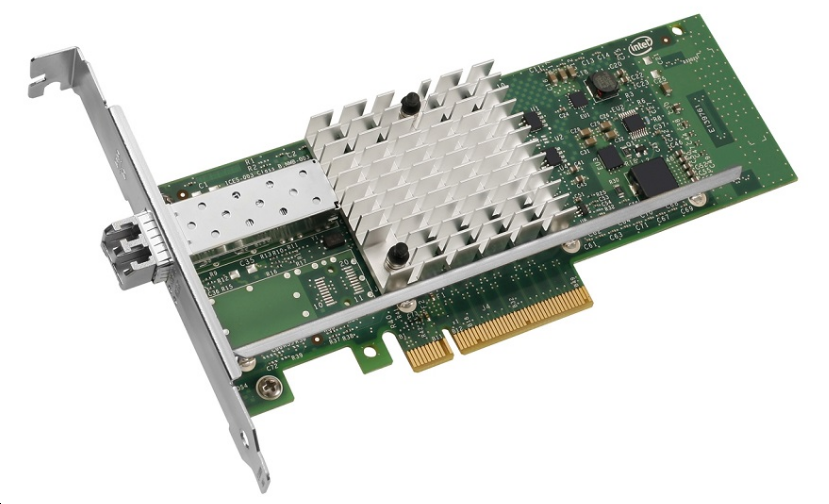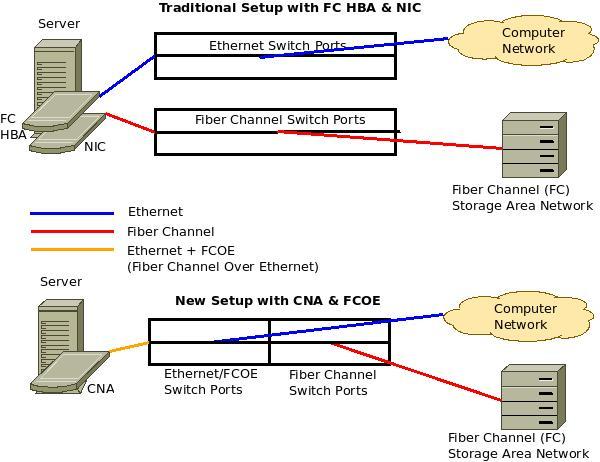- Related articles
- All Cisco CWDM-GBIC-1470's information (List price, Specs, Datasheet PDF, Compatibility ma
- All Cisco MA-SFP-10GB-LRM's information (List price, Specs, Datasheet PDF, Compatibility m
- Optical Transceivers for Cisco WS-C2960S-48FPS-L Switch
- All Cisco MGBSX1's information (List price, Specs, Datasheet PDF, Compatibility matrix)
- Optical Transceivers for Cisco N3K-C3048-FA-L3 Switch
- Best-selling models of Intel Ethernet server adapters
- All Cisco ONS-XC-10G-S1's information (Overview, List price, Specs, Datasheet PDF)
- Optical Transceivers for Cisco WS-C3750V2-24PS-E Switch
- Optical Transceivers for Cisco SLM248PT-G5 Switch
- What Is Multiport Network Card

A converged network adapter (CNA) is a single network interface card (NIC) that contains both a Fibre Channel (FC) host bus adapter (HBA) and a TCP/IP Ethernet NIC. It connects servers to FC-based storage area networks (SANs) and Ethernet-based local area networks (LANs).

What is a converged network adapter?
Converged network adapter (CNA), also called a converged network interface controller (C-NIC), is a computer input/output device that combines the functionality of a host bus adapter (HBA) with a network interface controller (NIC). In other words, it "converges" access to, respectively, a storage area network and a general-purpose computer network.
What is converged network adapter used for?
The CNA connects to the server via a PCI Express (PCIe) interface. The server sends both FC SAN and LAN and traffic to an Ethernet port on a converged switch using the Fibre Channel over Ethernet (FCoE) protocol for the FC SAN data and the Ethernet protocol for LAN data. The converged switch converts the FCoE traffic to FC and sends it to the FC SAN. The Ethernet traffic is sent directly to the LAN. And Converged Network Adapters can be used as stand-alone 10 GE NIC (Network Interface Cards), if storage networking is not immediately required. FCOE & FC SAN functionalities can be added later on.
Advantage of converged network adapter
The main advantage of Converged Network Adapter is the reduction of the number of adapters required on the server, reduction of the amount of cables, reduction in the amount of switch ports, reduction in the number of PCI Express slots (on the server). .Using a single CNA to connect servers to storage and networks reduces costs by requiring fewer adapter cards, cables, switch ports, and PCIe slots. CNAs also reduce the complexity of administration because there is only one connection and cable to manage.
Now you have known the applications and advantages of converged network adapter, so what is the difference between traditional setup and new setup? Don’t worry, we will introduce it now and allow you have a more profound understanding of it.
Traditional setup VS New setup
In large enterprise companies, main servers have (at least) two adapters – FC HBA (FIber Channel Host Bus Adapter) & Ethernet NIC (Ethernet Network Interface Card) to connect to the storage network (Fiber Channel) and computer network (Ethernet). Converged Network Adapters converge the functionality of both the adapters into one.

What is a converged switch?
Summary





















































